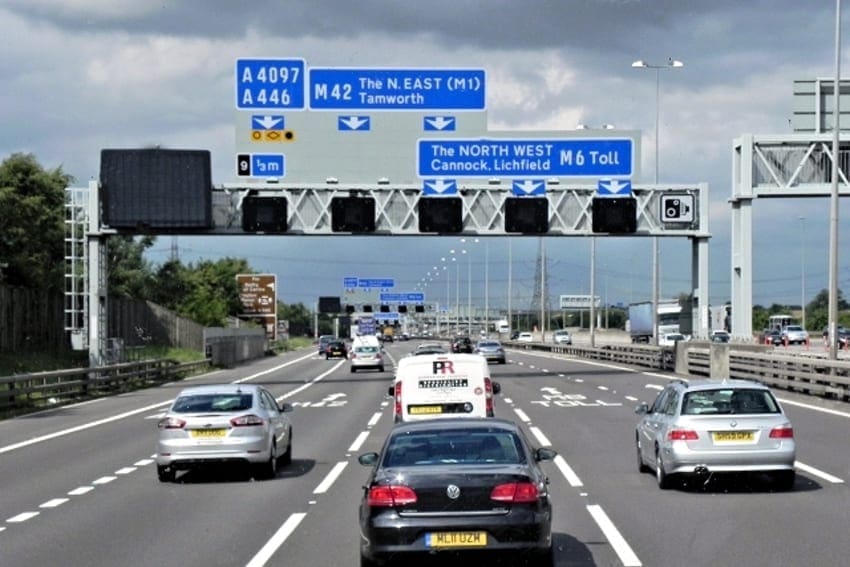According to road chiefs, individual smart motorway cameras are expected to rack up £600,000 in fines every year – and police forces across the country are hiring more staff to deal with the extra workload.

Around one million motorists are caught speeding in Britain each year – and with more stretches of smart motorway being rolled out, the chances of getting caught are higher than ever.
If you’ve missed the news on smart motorways up until now, you might be surprised to hear they’ve been around since 2006. First introduced on the M42, its success has resulted in a total 236 miles of smart motorways being introduced across England. And there’s more on the way.
Operated by Highways England, smart motorways essentially use technology to manage the flow of traffic during busy times. But with motorists being handed £100 fines and three points for breaking rules under the new, stricter system, there have been suggestions that riders and drivers are being milked for cash.
So many motorists are expected to be punished that police forces are recruiting staff to deal with the predicted workload. In fact, Thames Valley has confirmed it’s taking on an extra 15 staff for when Highways England switches on the smart sections of the M4 and M40 later this year – as it expects to capture 30,000 infringements on the two stretches of road per year.
TO HELP AVOID A PENALTY, THESE ARE THE RULES TO FOLLOW.
Never drive under a red “X”
Keep to the speed limit shown on the gantries
A solid white line indicates the hard shoulder – don’t drive in it unless directed
A broken white line indicates a normal running lane
Use the refuge areas for emergencies if there’s no hard shoulder
Put your hazard lights on if you break down
AA president Edmund King said: “If more resources were put into making the gantry signs accurate and the variable speeds right for the conditions, you might not need more resources for enforcement. Accurate technology and more consistent and appropriate speed limits would actually reduce the levels of fines. Any ‘income’ from fines should go into making these roads safer by sorting technology and doubling the number of lay-bys.”
That’s not all. Smart motorways have sparked further controversy following a series of accidents. With hard shoulders being used as additional lanes to help reduce congestion, drivers who need to stop must continue to an emergency parking bay. But cars that have been unable to make it to the refuge area have been hit by other motorists. In fact, four people have been killed in just ten months on a smart motorway section of the M1 – as a result of drivers being unable to reach the safe refuge zones.
Richard Goddard of the Campaign for Safer Roadside Rescue and Recovery, said: “I think the motoring public will be flabbergasted and shocked to see the scale of the cash cow these smart motorways have become. We fervently believe they are not safe. The refuge areas are too far apart. Motorists face the petrifying risk of breaking down in a live lane, many hundreds of yards from a refuge area with traffic barrelling down behind them. At the very least, every penny generated by these cameras should be ploughed back into making these roads safer.”
What do you think about Highways England’s roll out of smart motorways? Do they really help reduce congestion or are they another tool for police forces to rake in extra funds?


